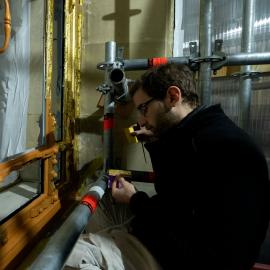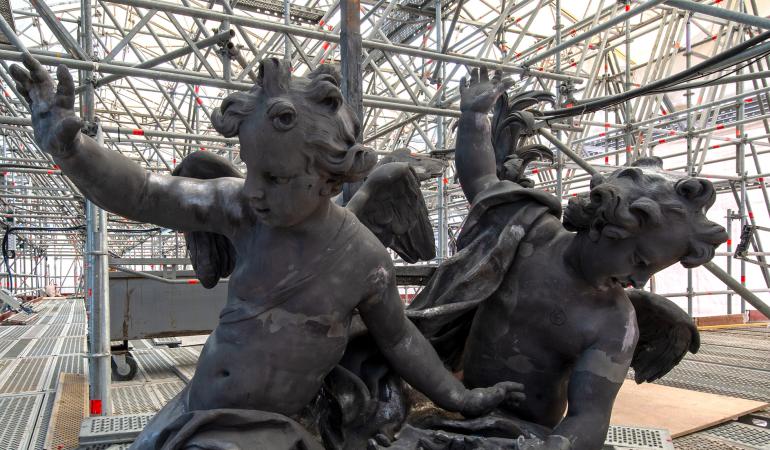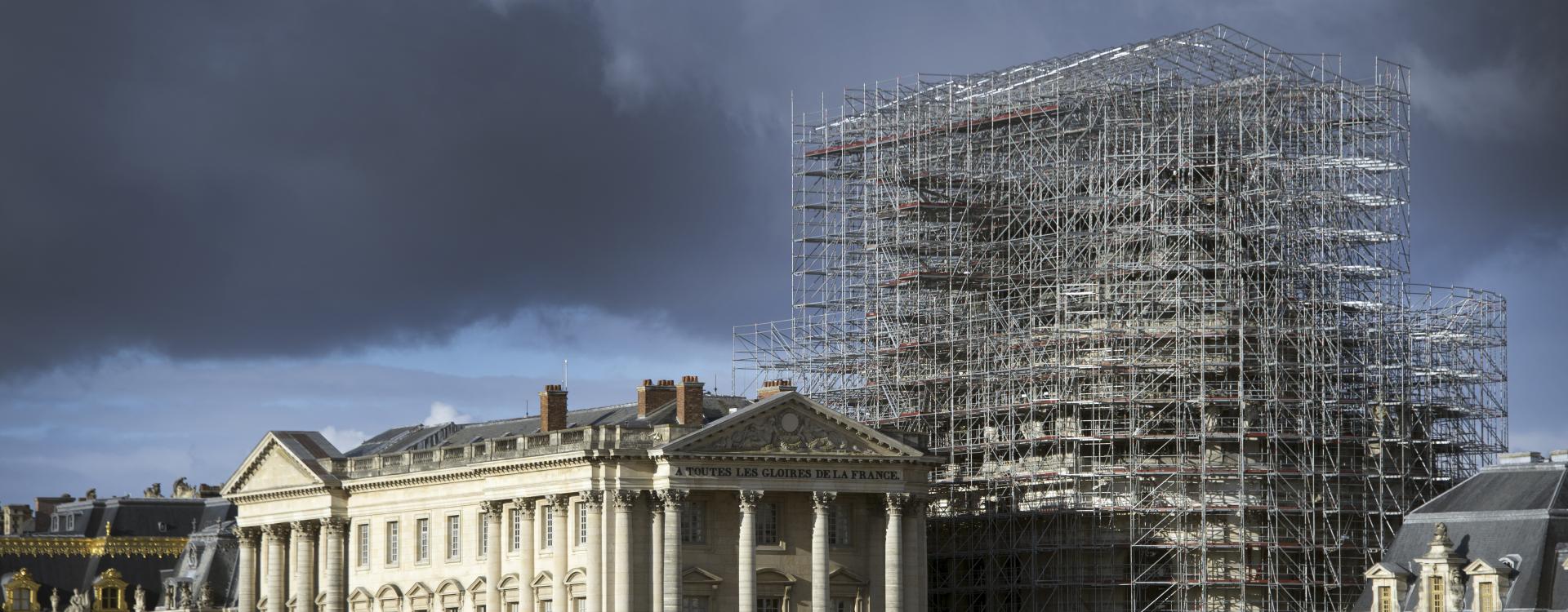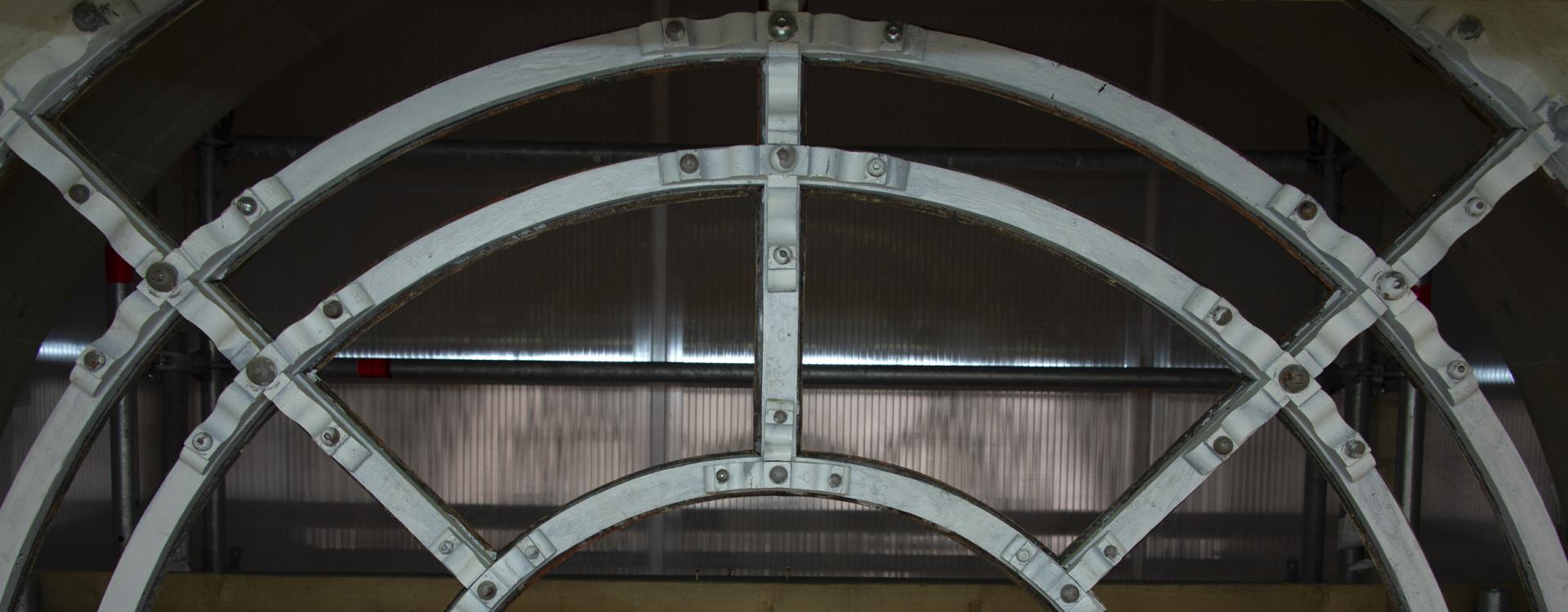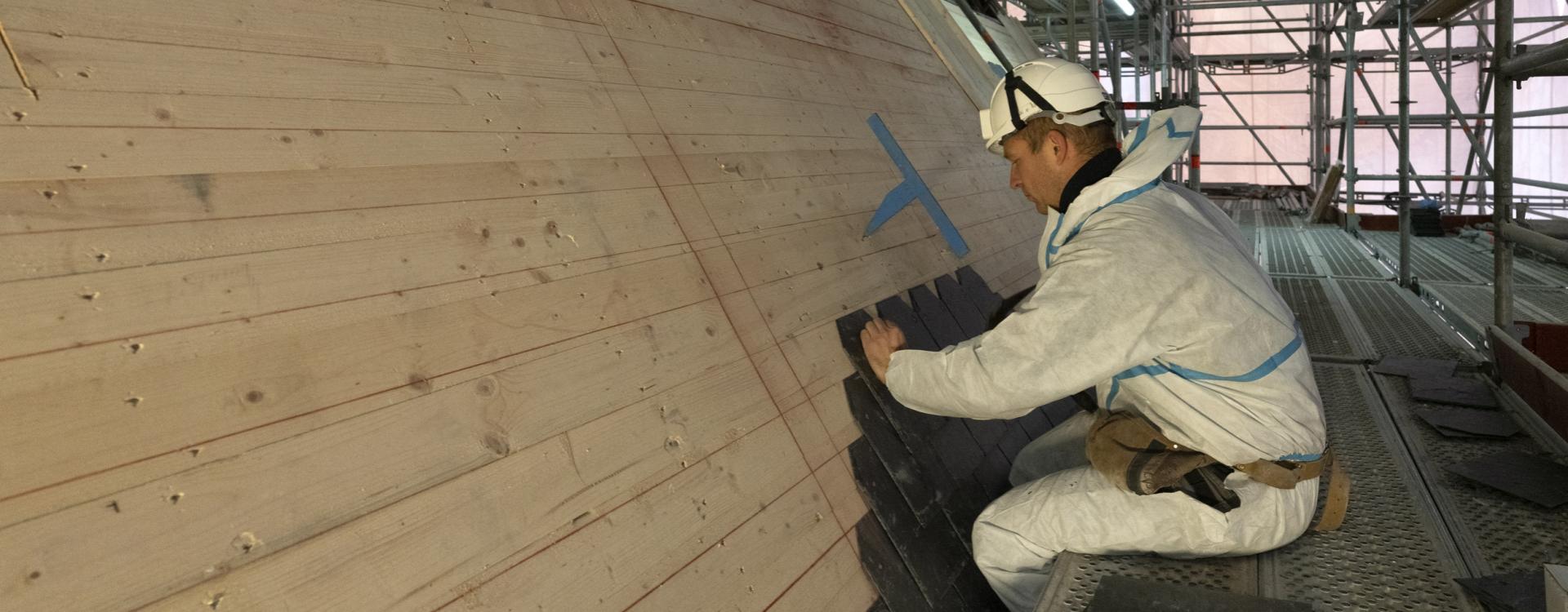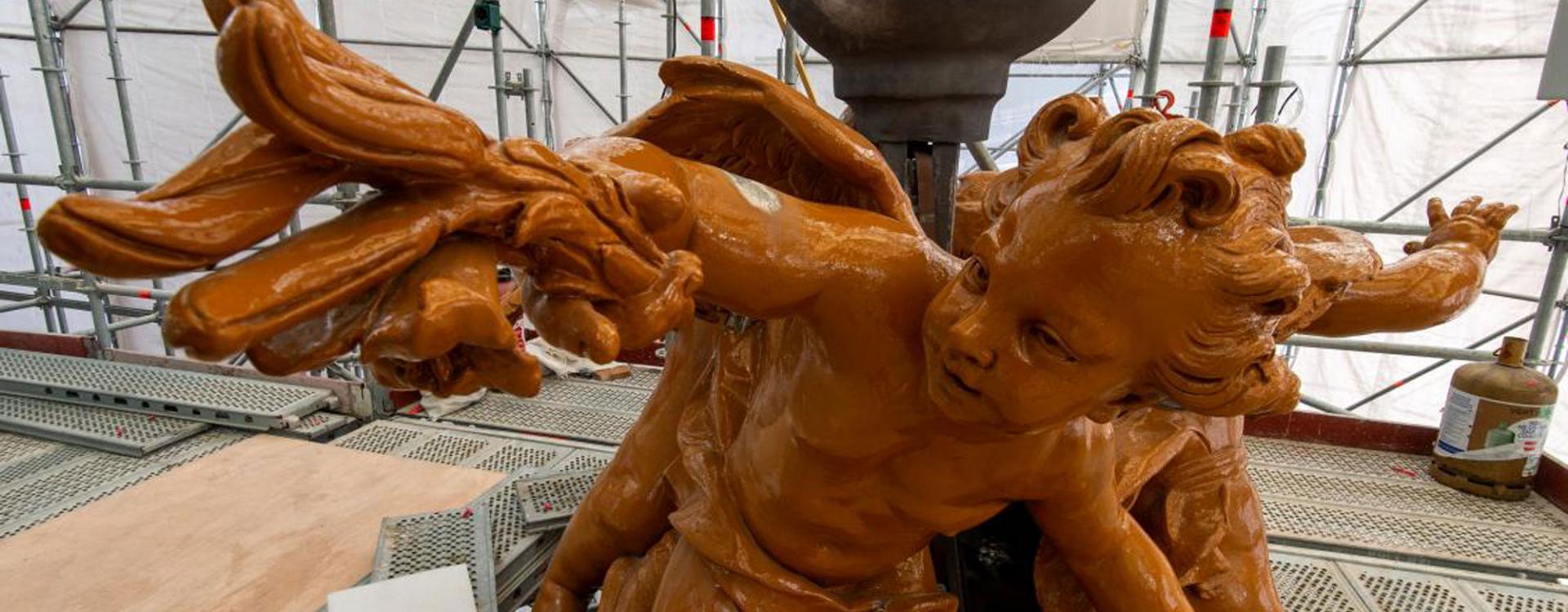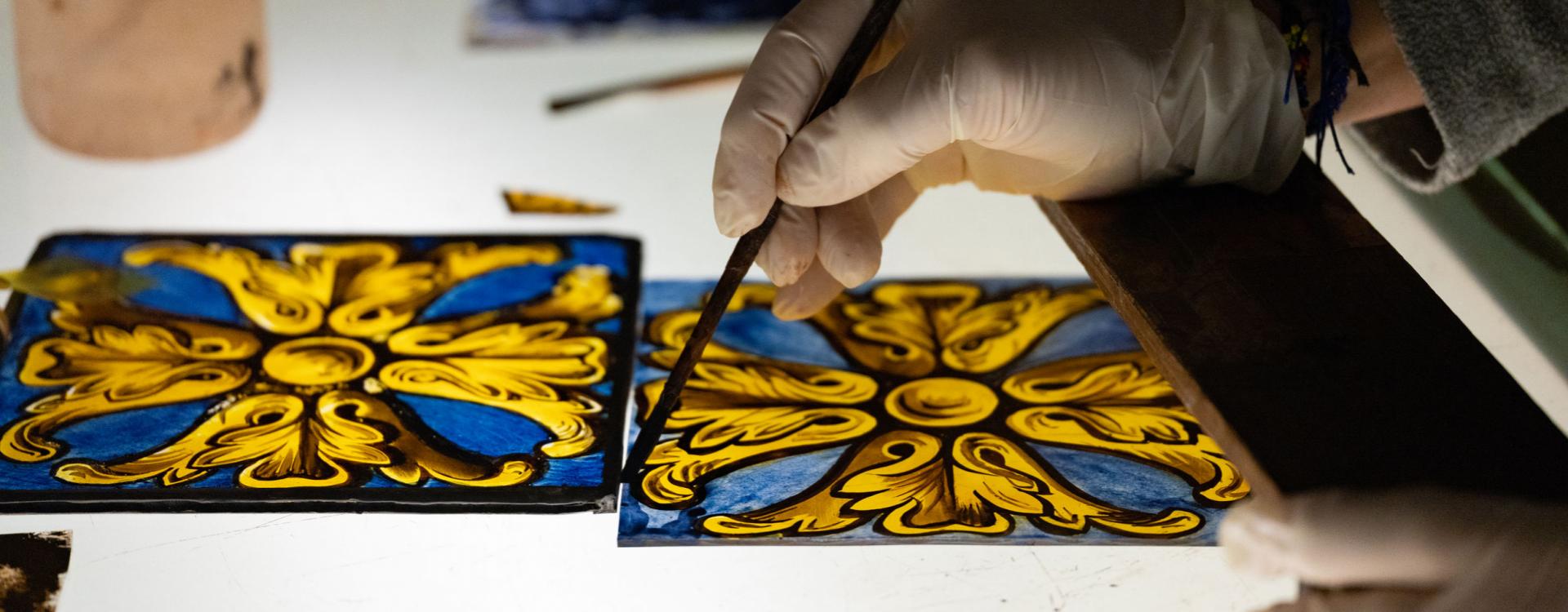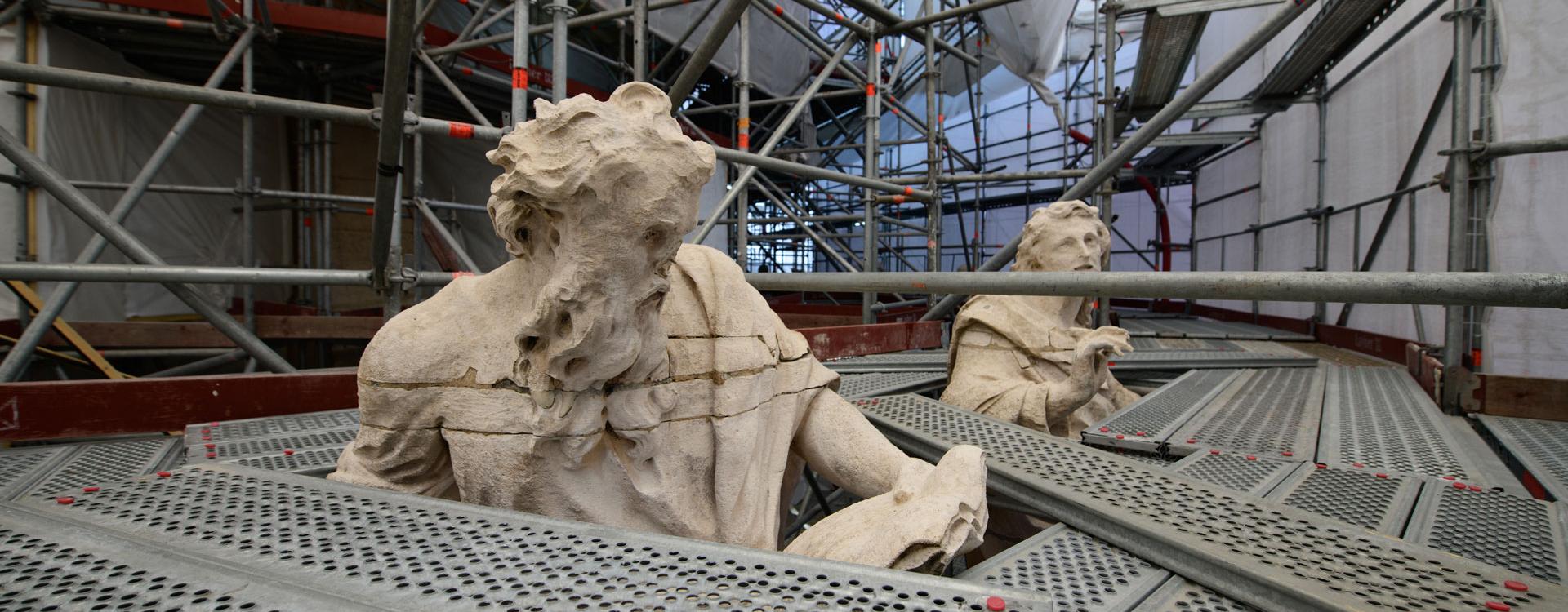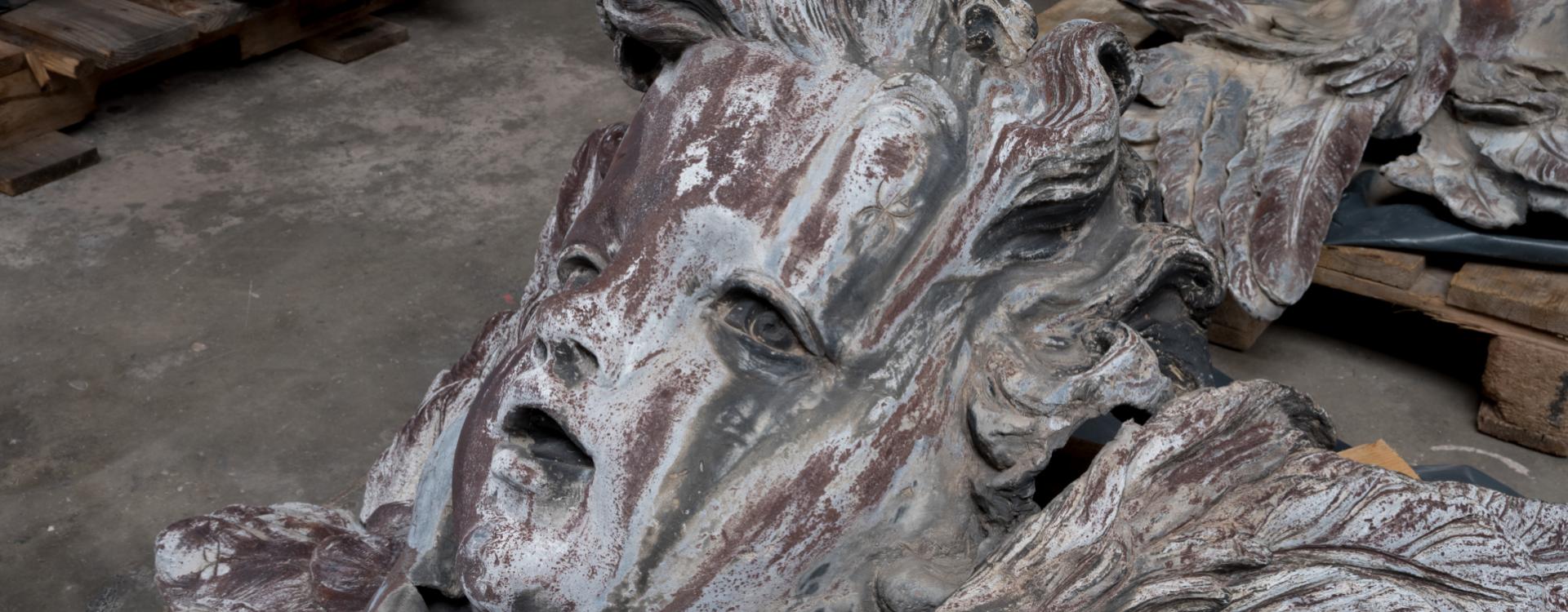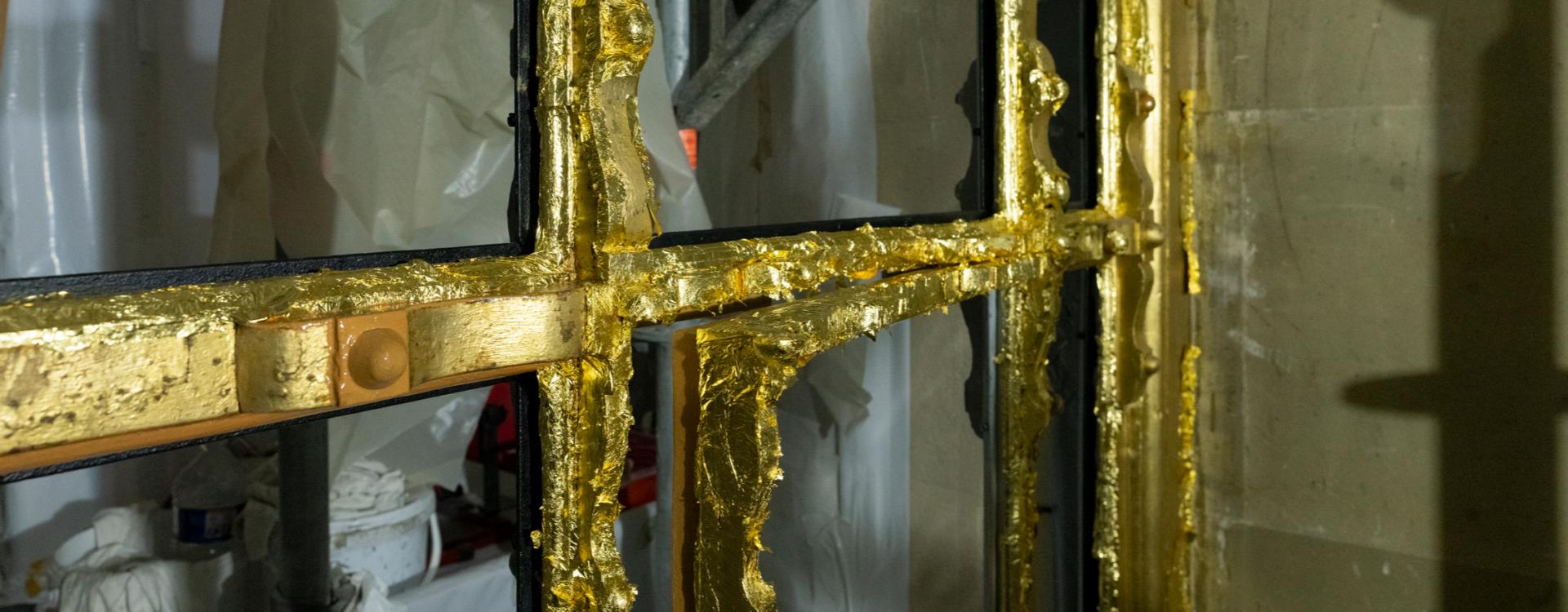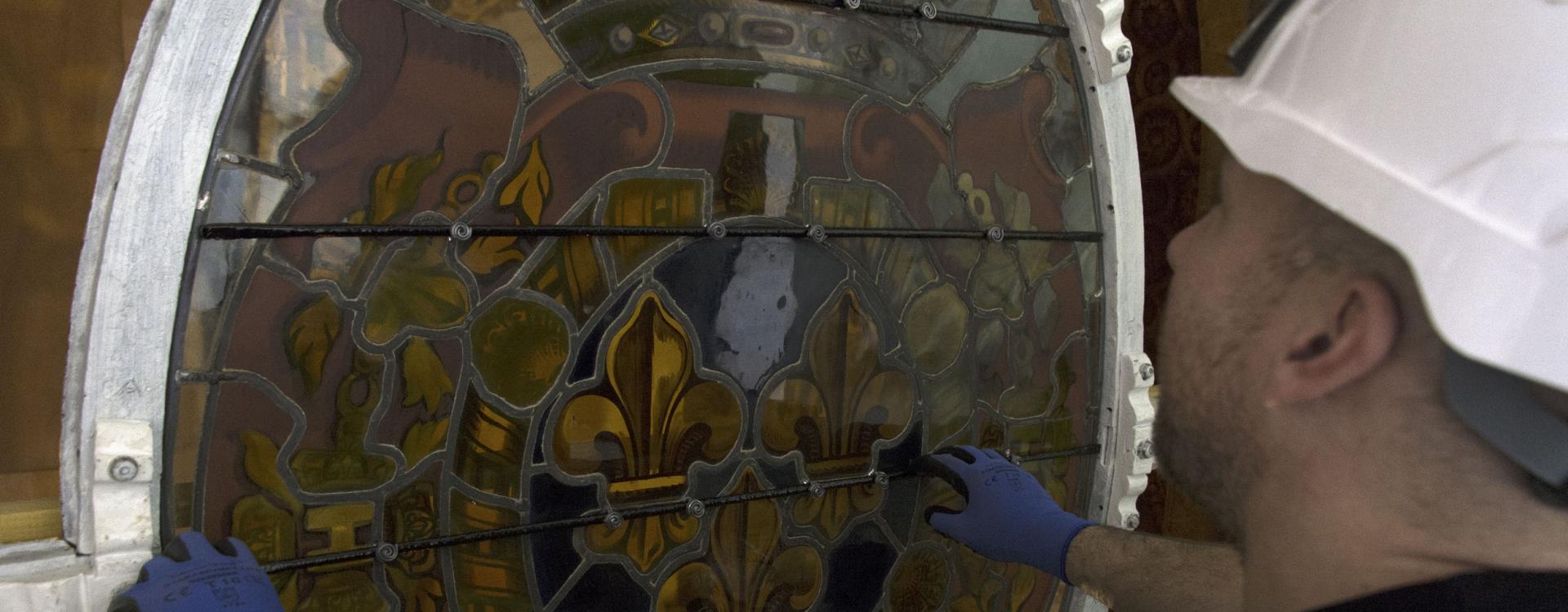A brand new look
As the restoration of the roof structure is completed, the lead cherubs are reappearing at the Royal Chapel restoration site. Two years after their removal, followed by their restoration in Périgueux, they are again being loaded onto enormous cranes and returned to their original positions. This operation calls for extreme caution, given that a single lead cherub weighs nearly 800 kilograms and must be handled as delicately as possible at the top of the building.
Before the cherubs are repositioned, the work of the restorers is carried out in several stages: the statues are cleaned and degreased, any sediment is removed, cracks are filled with molten lead that prevents water seepage, the welding is tidied up, surfaces are rendered smooth and uniform, and the final chiselling (adding the finishing touches to adornments and decors) restores them to their initial intact state. The cherubs have also been consolidated with the installation of new internal supporting structures. To conclude, these works require technical expertise, but also a genuine artistic sensibility. Two more weeks are then required to complete the final welding in situ.
The symbolic return of the cherubs
These statues of naked and winged, chubby-cheeked and mocking little infants, called "putti", are essential elements in the architectural ornamentation of the façade and overlook the Versailles estate. Their return to their lofty positions gives symbolic expression to a key stage in the works, where the next step is the installation of the roofing. The lead sculptures will then return to the gilders' hands, who will add the finishing touches, thus completing their restoration.






